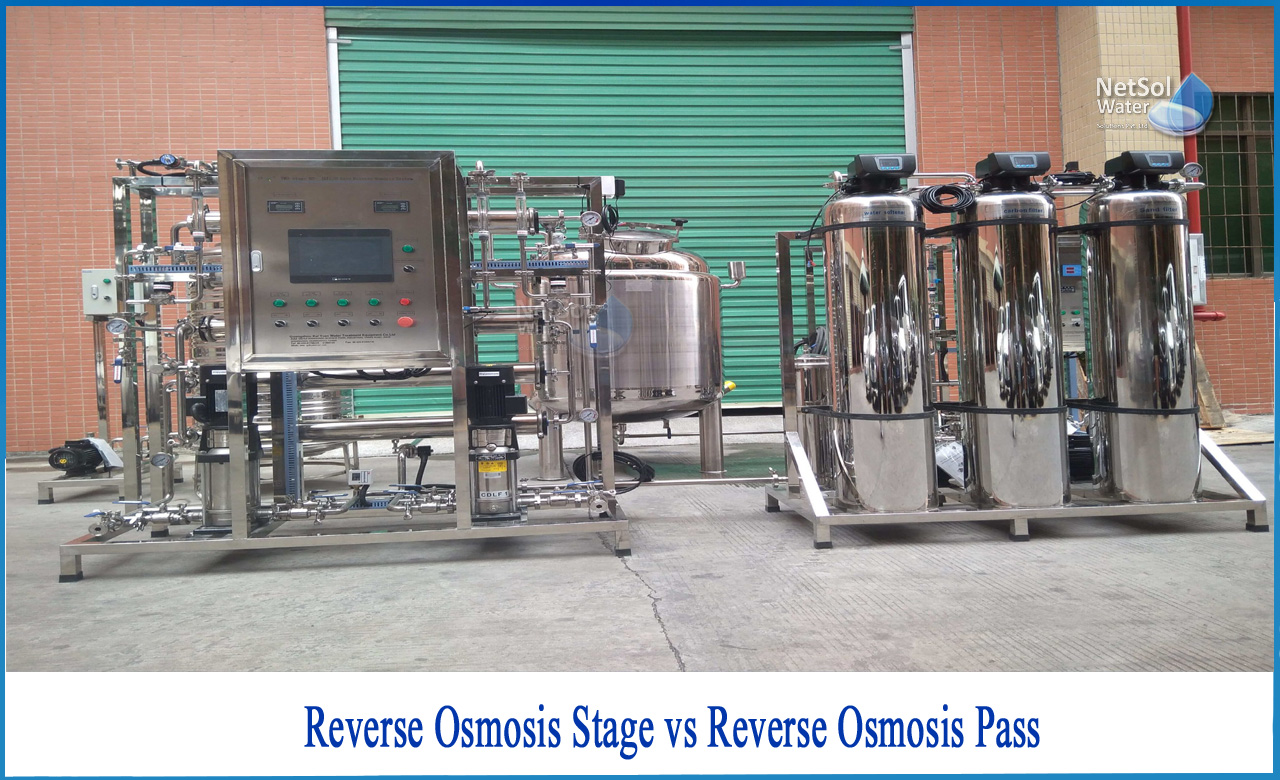What is Reverse Osmosis Stage and Reverse Osmosis Pass?
The terms "stage" and "pass" are frequently misunderstood as interchangeable. It's crucial to know the difference between a 1 and 2 stage RO, as well as a 1 and 2 pass RO.
The feedwater enters the RO system as a single stream and exits as either concentrate or permeate water in a one-stage RO system.
Reverse Osmosis Stage
The concentrate from the first stage provides the feed water for the second stage in a two-stage RO system. The permeate water collected in the first step is blended with the permeate water obtained in the second stage. Additional steps speed up the system's recovery.
In a two-stage reverse osmosis system, an array refers to the physical layout of the pressure vessels. RO membranes are contained in pressure vessels. A certain number of pressure vessels with RO membranes can be added to each step. The feed stream for the following step is made up of the rejects from the previous stages.
The 2:1 array is a two-stage RO system in which the concentrate (or reject) from the first two RO vessels is supplied to the next vessel.
Reverse Osmosis Pass
A "pass" should be regarded as a self-contained RO system. A double pass RO system differs from a single pass RO system in that the permeate from the first pass becomes the feed water for the second pass (or second RO), resulting in a significantly higher quality permeate because it has basically gone through two RO systems.
A reverse osmosis system purifies water by rejecting nearly all of the total dissolved solids in the supply water. Single-pass RO systems simultaneously create product water (permeate) and reject water (concentrate).
Why use a Reverse Osmosis system with two passes?
When a specified intended water quality level on the end permeate is required by the process equipment, DPRO (Double pass reverse osmosis) is typically applied.
It is possible to employ a pair of brackish water RO systems or a sea water RO system followed by a brackish water RO system. Due to community pressure, several plants are beginning to reuse water in order to reduce the usage of either city-supplied water or water drawn from raw sources, which dries out the aquifer in their area.
DPRO is used by these facilities to improve the water efficiency of their systems. By design, single-pass RO systems can only retrieve up to 80% of the supply water. Water recovery can be increased by more than 90% when using a DPRO.
Droughts are affecting many parts of the world, putting pressure on people to conserve water. A two-pass RO system can aid by reducing the amount of reject water produced.
Some industrial plants are taking it a step further by implementing the Zero Liquid Discharge plan, which includes using a DPRO, Evaporator, or Brine Concentrator to remove salt from clean water during the final treatment phase, followed by a Salt Crystallizer.
If you want to know more about the reverse osmosis process, then you are at the right place!
You can have an expert solution upon contacting Netsol Water, a leading manufacturer of Industrial and Commercial Water treatment plants and Wastewater treatment plants, among other services. Our treatment systems are very effective at removing all types of chemical, physical, and biological pollutants.
Netsol Water is Greater Noida-based leading water & wastewater treatment plant manufacturer. We are industry's most demanding company based on client review and work quality. We are known as best commercial RO plant manufacturers, industrial RO plant manufacturer, sewage treatment plant manufacturer, Water Softener Plant Manufacturers and effluent treatment plant manufacturers. Apart from this 24x7 customer support is our USP. Call on +91-9650608473, or write us at enquiry@netsolwater.com for any support, inquiry or product-purchase related query.



